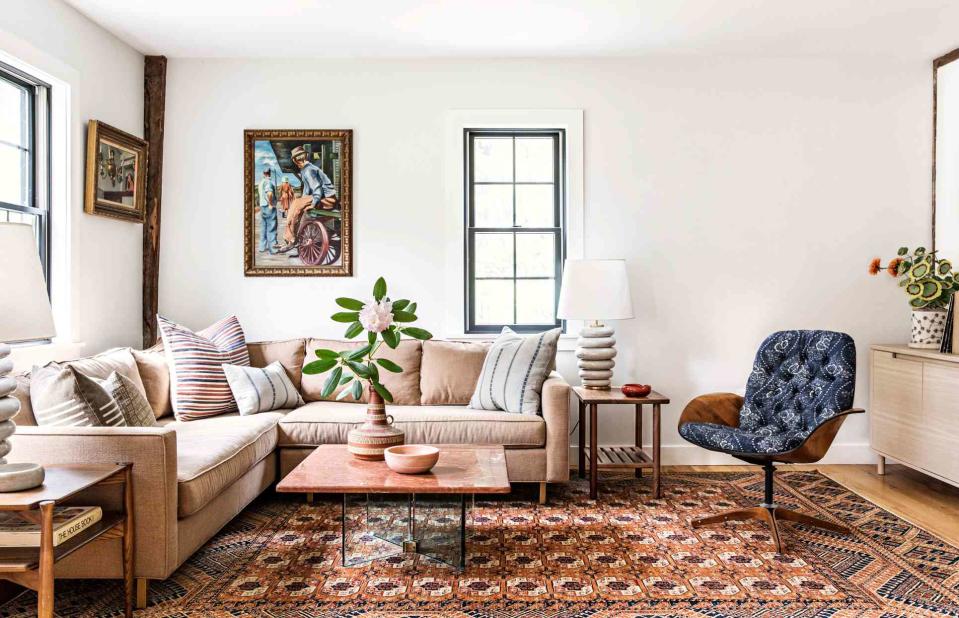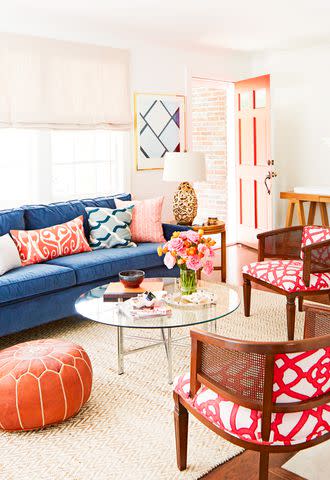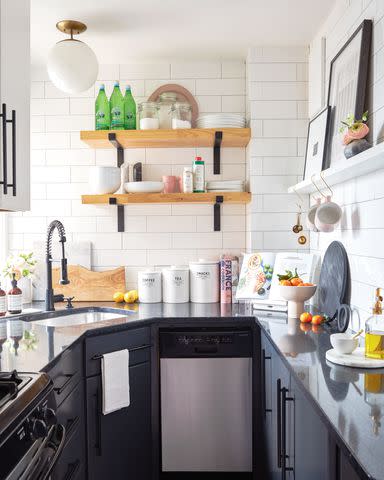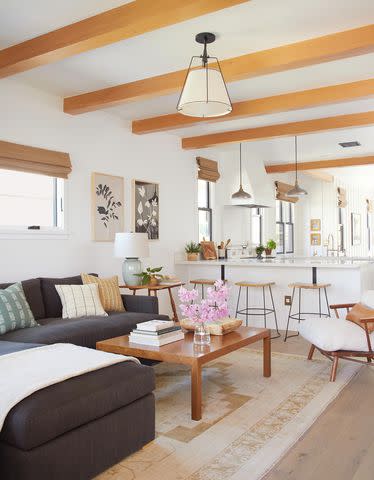Goodbye, Open Concepts—More People Putting Up Walls in Their Homes
See why some homeowners are returning to defined gathering spaces.

Better Homes & Gardens / Erin Little
Not long ago, homeowners swapped walls in favor of combined living spaces that skewed the lines between living, dining, and cooking. But some are experiencing a case of demo-related remorse as builders see a return to defined gathering spaces in lieu of previous open-concept floor plans.
A variety of factors contribute to this shift, most predominately a global pandemic that forced many to rethink the rooms in their home. But what can be done if you own an open-concept home yet desire more intimate and well-defined spaces? The good news is that there are still plenty of ways to restore the feeling of separate spaces without putting up a "for sale" sign in the front yard.
If you’re looking to make a return to defined gathering spaces in your home, here’s everything you need to know—straight from the pros.

Better Homes & Gardens / Adam Albright
Why Are Homeowners Being Drawn to Defined Gathering Spaces?
Trends regarding how we live are so often a sign of the times. Throughout the past three years, many have been more homebound than ever before, which has certainly impacted our behavior when it comes to how we use our homes. Designer Lindsay Speace of Lindsay Speace Interior Design says this might be the reason we’re seeing a change in design preferences.
“After so much time at home during the pandemic and the resulting shifts to the way we now work and live, I think we're going to see the pendulum swing back towards more traditional floor plans,” she says. “To me, the most exciting thing about defined gathering spaces is the opportunity to create rooms throughout a home that each have their own vibe or unique atmosphere and can be experienced in a different way. I'm always trying to incorporate as many textiles and art as I possibly can in each project and defined spaces give me more flexibility to do so.”
Taylor Hill of Taylor Hill Interior Design says it’s all about architecture. “I think people have realized the importance of walls, finally! More frequently than ever do we see households with multiple family members working from home, so sound attenuation and separation of different spaces has become a more functional necessity.” As Hill points out, walls can also provide major benefits when it comes to designing a space, acting as an anchor for art, furniture, soft goods, and more.
And some of us might just be realizing why dining rooms, dens, and offices were created in the first place. “Defined gathering spaces give us a sense of place for each of the living spaces,” says Kathryn Lott of Kathryn Lott Designs. “People appreciate the need for a living room being just a living room.”

Better Homes & Gardens / Brie Williams
What Are the Benefits of Defined Gathering Spaces?
One of the greatest draws of defined rooms? Walls. An open concept is great for a bird’s-eye view of the family while they go about their various tasks, but it can be a real issue when peace and quiet are needed. Containment is a key benefit of defined spaces—both noise and clutter. With divided spaces, you can more easily hide away children’s toys, craft supplies, and even a load of laundry that needs folding.
But what about the design aspects? Is it easier to design a home that has separate dining and living areas? Speace gives a resounding, yes. “From a design perspective, open-concept spaces can be limiting,” she says. “When you're dealing with one large room that is broken up into zones, you don't have as much latitude with your selections.”

Better Homes & Gardens / David Tsay
What Are the Benefits of an Open-Concept Design?
While there’s much to be said about the benefits of defined living spaces, especially with a trend toward more traditional layouts, the allure of fewer walls and an open sight line is still massively appealing to many homeowners. “There is a draw to open concept, especially with families,” says Lott. “It allows us to live openly through the home without barrier.”
Plus, lifestyles have shifted in recent decades. “Our lifestyles have become less formal than previous generations and open-concept floor plans were popularized as a more casual way of living,” says Speace. “Informal dining spaces and large kitchen islands became mainstays in kitchens as homeowners moved away from traditional dining rooms that were infrequently used.”
From families with small children to football fans who don’t want to miss a minute of the game while prepping buffalo chicken dip, there are plenty of homeowners that are perfectly content in their wall-less dwellings—no matter whether they’re trending or not. And finding a layout that works for your family and lifestyle is key to timeless design.

Better Homes & Gardens / David Tsay
How to Create Defined Living Spaces No Matter a Home's Layout
If you jumped on the open-concept bandwagon only to find yourself hankering for the cozy confines of actual walls, you’ll be glad to know all is not lost. With careful design, you can create more defined spaces that mimic actual rooms. “I suggest using furniture and decorative objects to create sightline boundaries and separate 'use' areas,” says Hill. “For example, if a dining space and living space have no dividing walls, then layer a console behind the sofa with tall lamps to create a wall-like boundary between the two 'rooms.'"
Speace relies on rugs to delineate spaces within an open floor plan but also tries to create multiple seating areas within the living space if square footage allows. “[Multiple seating areas] create a more intimate and cozy space,” she says.
false
